As airports and security organizations, like the Transportation Security Administration (TSA), strive to modernize and enhance the efficiency of their operations, the move towards Open Architecture has become increasingly critical. Open Architecture, which allows for interoperability between different systems and components, is vital in a landscape where flexibility, scalability, and vendor neutrality are key. At the heart of this transformation lies the Threat Recognition System (TRS), a centralized server that plays an essential role in optimizing and managing security screening processes.
The Challenge of Vendor Lock-In
Traditionally, the TSA and other security agencies have an unenviable challenge in providing security checkpoint, baggage, and body screening systems that meet detection needs while introducing as little headache to the traveler as possible. The stakeholders range from government regulators, airlines and travel providers, the paying passengers, and even the security teams themselves. Each bring their own unique perspectives and priorities in terms of the most important capabilities and features of any security technology.
Presently, there are a small number of providers for solutions who bear the brunt of balancing the need for integrating new technologies, adapting to evolving threats, and maintaining cost efficiency. In an environment where threats continually evolve, only having a limited set of proprietary solutions restricts the ability to innovate and respond effectively. Additionally, it hinders industry involvement in providing adequate solutions due to the capital investment needed to design, develop, test, and then sell a full-scale end-to-end solution. More and more third-party providers are showing great capability in answering the calls from TSA and DHS for innovative solutions. Many of these smaller companies specialize in one or more components, such as a detection algorithm or a customizable viewing platform which could potentially represent the "best in class" to fit a major need. However, these solutions face major hurdles entering the marketplace because of rigid acquisition processes, the inability to certify or qualify standalone products, or the lack of willingness from the major providers to integrate with their solution.
Open Architecture is not just for small businesses and government agency customers. Rather, Open architecture enables every market participant to pursue an opportunity for their various offerings at every location. Further, it offers the ability for companies to focus on their core competencies. Let people apply their expertise where it fits best, instead of having to try to create the "best of everything". If you make a fantastic scanner, a company can focus on that and allow software specialty teams to develop the detection algorithms. In this way, customers receive the best options they can choose for their needs which will keep passengers happier, the skies safer, and the airlines on time.
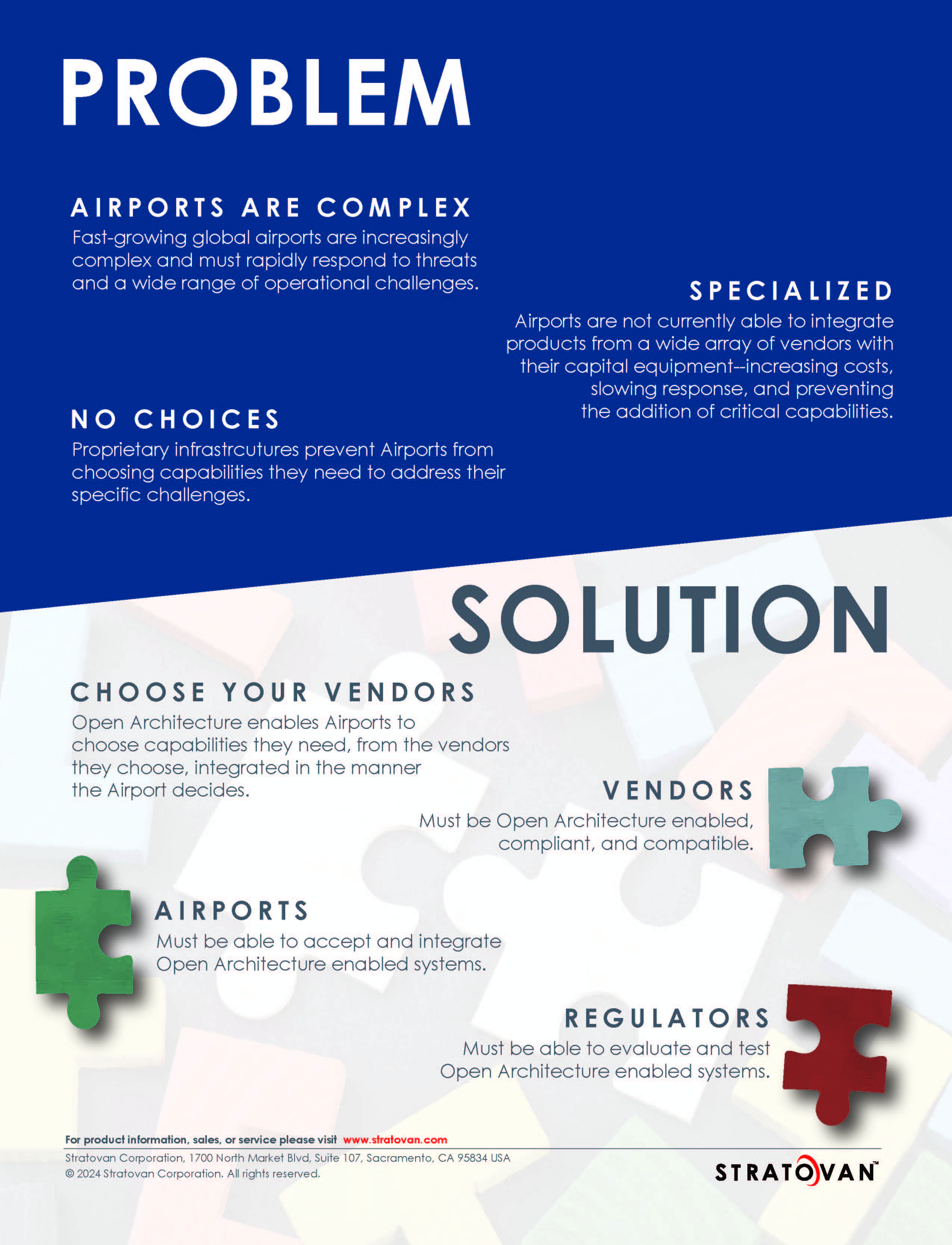
The Promise of Open Architecture: DICOS and OPSL
To address these challenges, TSA has been actively investing in the development of standardized file formats, known as Digital Imaging and Communication in Security (DICOS), and standardized interfacing through the Open Platform Software Library (OPSL). DICOS facilitates the exchange of security-related data across different systems, while OPSL enables the seamless integration of various software and hardware components, regardless of the vendor.
These standards are crucial steps toward breaking down the silos that have historically characterized security screening environments. By adopting Open Architecture, TSA and other security organizations can achieve a higher level of flexibility, allowing them to select and integrate the best-in-class solutions from multiple vendors, tailored to their specific needs. In the example below (all figures and numbers are for example only) we can see if we assume a 5% threat object rate, the implementation of an additional 3rd party screening solution can greatly reduce the workload on the more manual screening processes that are presently required to resolve alarms. This single potential benefit saves time and money from staffing needs and improves passenger experience with fewer pat-downs and baggage searches. Overall, everyone wins.
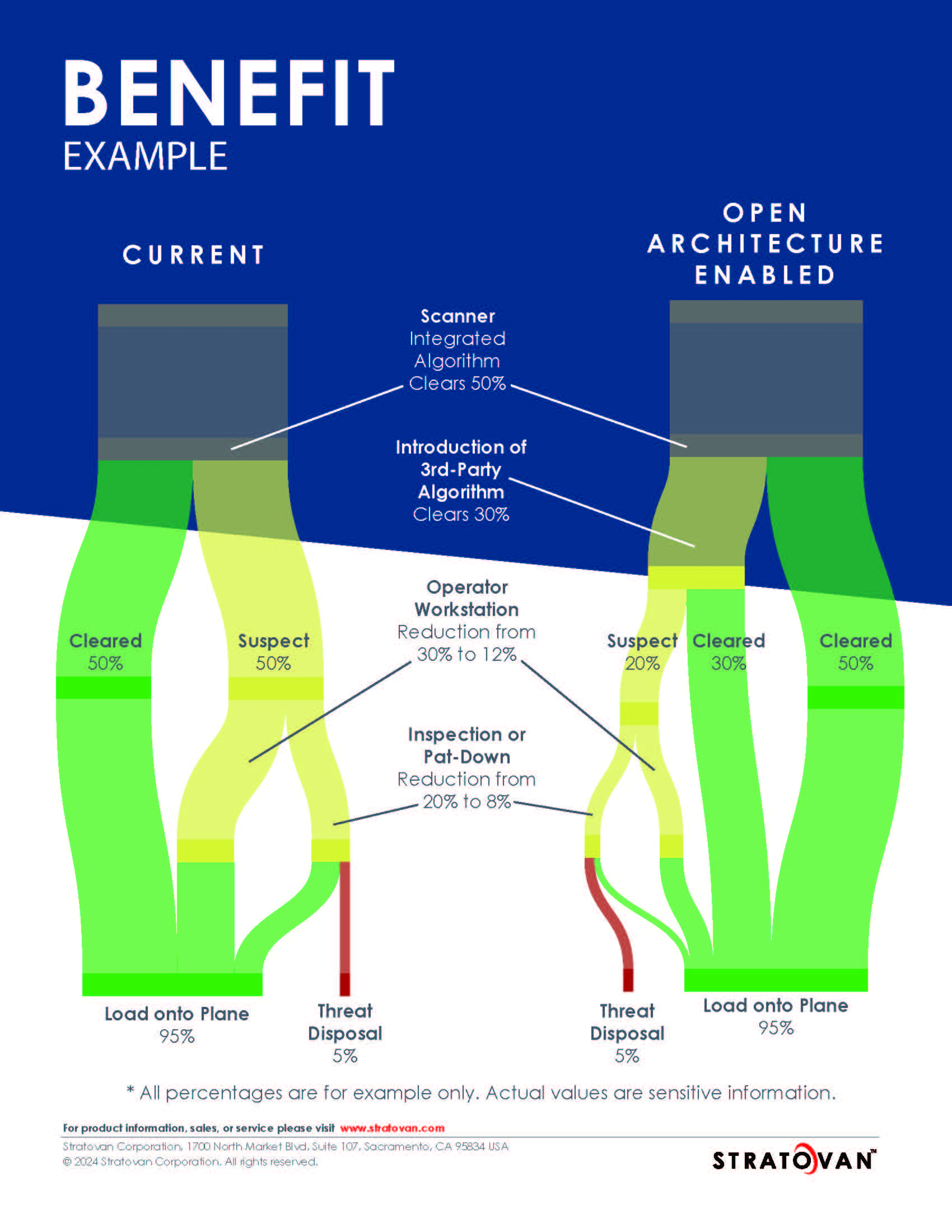
With the above benefits in mind, even the successful development of the DICOS standard and the OPSL platform, there is still a need for a central processing element to house and archive data, provide compute resources for Automated Threat Recognition (ATR) software, manage and configure data workflow configurations, and otherwise enable the Open Architecture vision for airports. The questions remain; where will this system come from and what will it be capable of? How can it support current needs and future technologies? How can it integrate equipment and software never designed to interoperate before?

The Central Role of the TRS
Within this Open Architecture framework, the Threat Recognition System (TRS) emerges as a pivotal component. The TRS acts as the command and control center for security screening operations, providing a centralized platform for managing and optimizing the entire ecosystem.
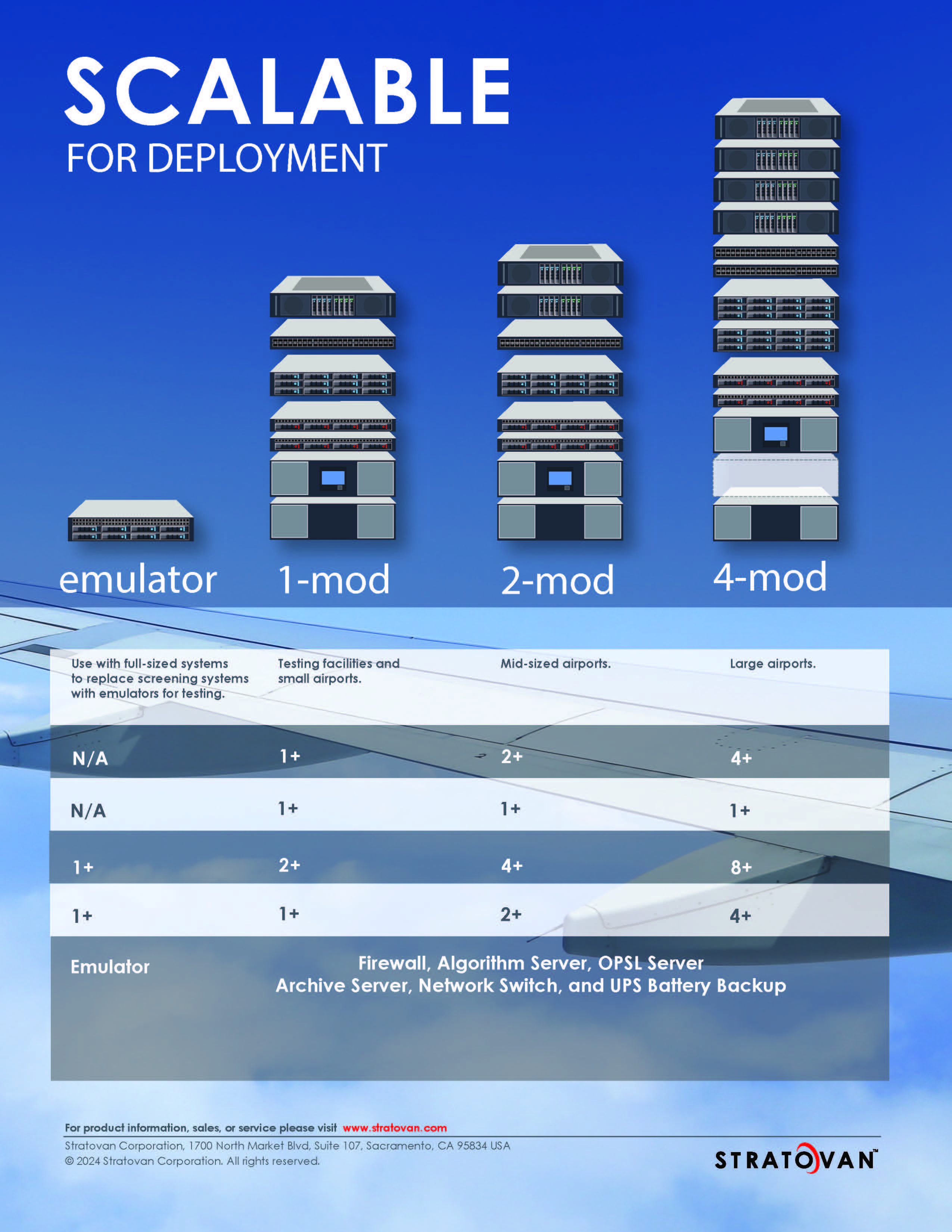
-
Command and Control: The TRS serves as the nerve center for all security screening operations. It enables the coordination and control of various systems and processes across multiple checkpoints, ensuring that the entire operation runs smoothly and efficiently. The Command and Control System, (CCS) is a fully interchangeable application that acts as the traffic cop for data flow from scanners and deployed equipment, routing it as necessary to automated detection algorithms and/or to viewer software for display to TSOs, equipment administrators, or whomever else is responsible for making a determination.
-
Archive: The TRS provides robust archival capabilities, allowing for the storage and retrieval of vast amounts of security screening data. This is crucial for both real-time decision-making and post-event analysis, enabling security agencies to continuously refine their processes and enhance security measures. Additionally, some data cannot be stored or can only be stored for so long. A smart archive, like one Stratovan has developed, can be custom-tailored to meet any data retention requirements so an organization is always compliant with guiding policies while balancing the need to retain data in case of a critical need.
-
Computer Resource Node, ATR Suite: The TRS acts as a powerful computing hub, hosting automated detection algorithms that are essential for identifying potential threats in real-time. By centralizing these resources, the TRS ensures that the most advanced detection technologies are applied consistently across all checkpoints. Different detection algorithms need different resources, so a platform that fields plenty of CPU, GPU, and RAM resources to use across multiple algorithms will be essential for the airport of today and the airport of tomorrow. The ATR suite in the current architecture has been tested across numerous ATRs from multiple vendors, providing a cross-section of analysis from a variety of design approaches. This allowed the architecture of the ATR Suite to avoid development bias from one organization and arrive at a platform fit for a variety of use cases.
-
Multiple Device/Checkpoint User Interface: One of the key advantages of the TRS is its ability to provide an easy-to-navigate and set up user interface. This allows security agencies to tailor workflows and data presentation to the specific needs of each checkpoint, ensuring that operators have access to the most relevant information and tools to perform their tasks effectively. Whether as an IT professional connecting devices and testing functionality, an operation manager monitoring equipment and performance, or an administrative leader collecting performance data and metrics for analysis, the TRS provides detailed information and easy-to-use interfaces for checkpoint setup for many devices and site needs.

Empowering Airports, Regulators, and Security Decision Makers
The TRS is not just a technical solution; it represents a fundamental shift in how airports, regulators, and security decision-makers can approach security screening. By leveraging Open Architecture enabled support like OPSL and DICOS, these stakeholders gain unprecedented control over their security ecosystem. They are no longer forced to rely on a single vendor’s offerings but can instead select the components that best meet their unique operational needs. Earlier in 2024, Stratovan led a demonstration with TSA to showcase the first TRS of it's kind with TSA Administrator Pekoske, demonstrating a while variety of real world use cases with live scans, real baggage, and potential threat objects. Below is the wide array of participants this TRS enabled in a "first of its kind" demonstration showing the true power of Open Architecture.
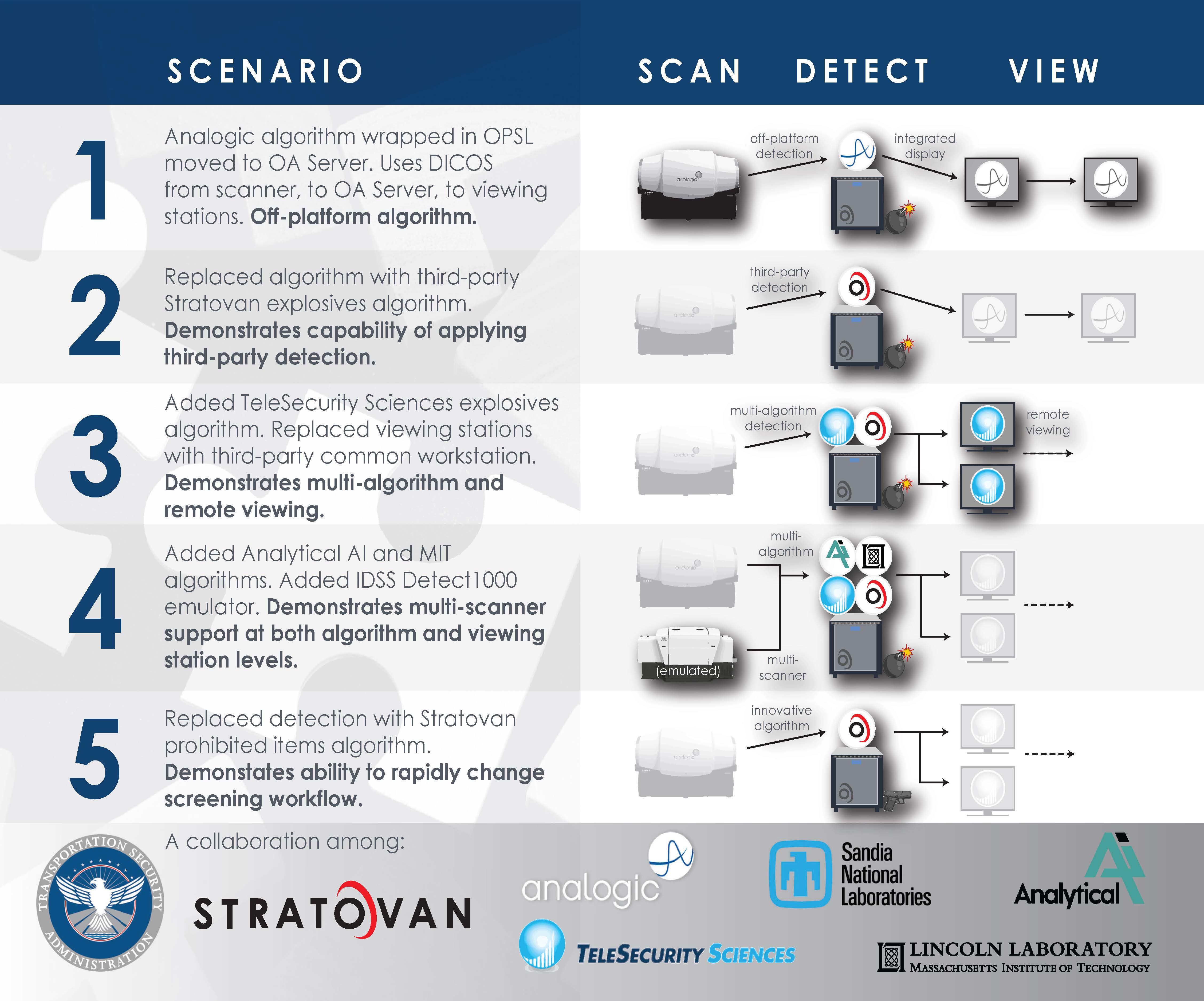
With a TRS in place, security agencies can:
- Integrate Best-in-Class Solutions: Choose the best technologies from a wide range of vendors, ensuring that they have the most effective tools at their disposal.
- Adapt to Changing Threats: Quickly integrate new technologies and algorithms as they become available, staying ahead of emerging threats.
- Optimize Operations: Customize workflows and data management to enhance efficiency and effectiveness across all checkpoints.
Here is feedback from TSA officials regarding the demonstration and its impact on operations to come:
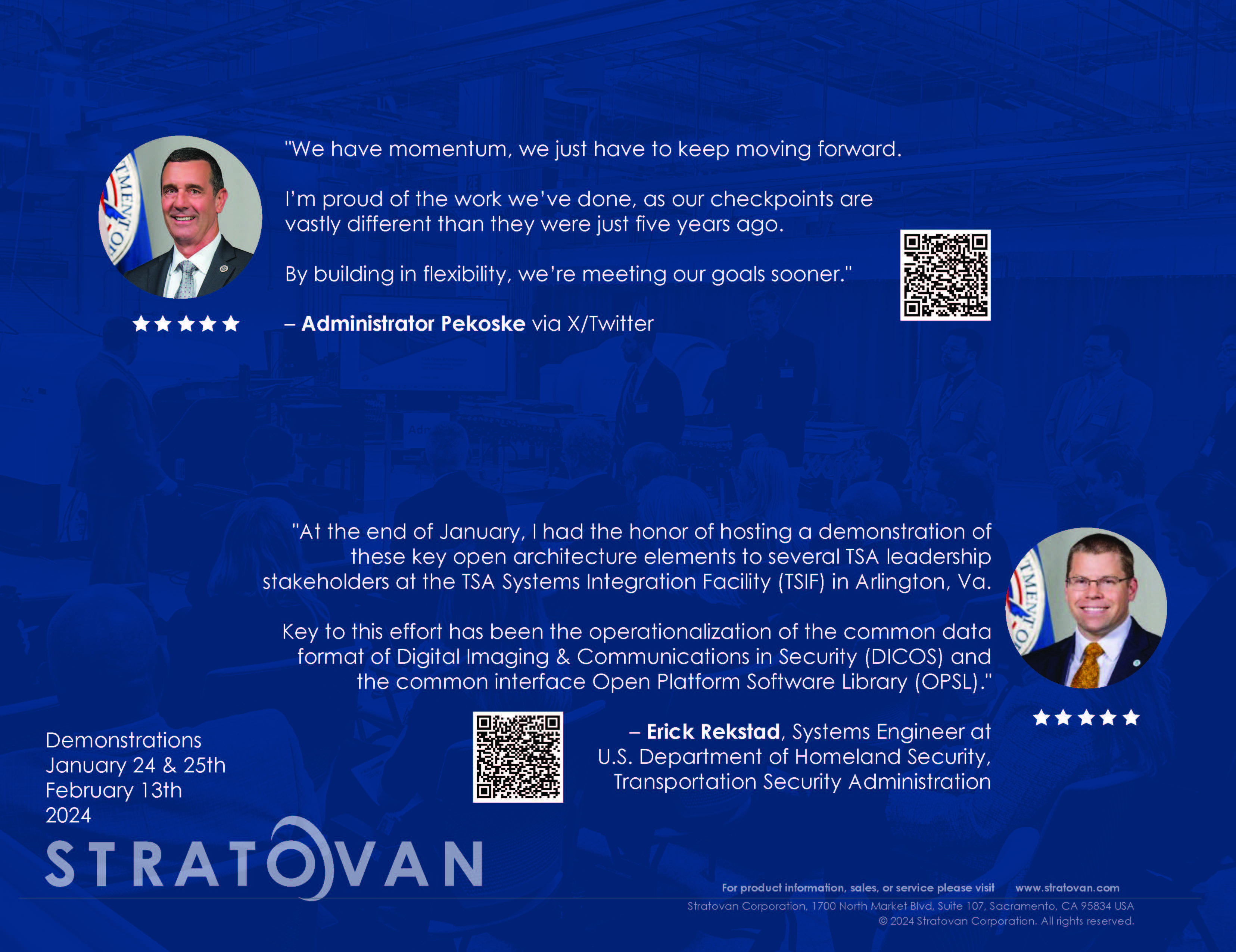
At Stratovan, we are proud to be at the forefront of this revolution in security screening technology. Our TRS solutions are designed to empower security agencies with the tools they need to create a more secure, efficient, and adaptable screening environment. We invite you to explore the latest TRS models we have developed, which have been architected, built, tested, and deployed to meet the highest standards of security and performance.
The move towards Open Architecture, underpinned by standards like DICOS and OPSL, is not just a technological upgrade—it’s a strategic imperative. The TRS is a critical component of this transformation, offering the centralized control, flexibility, and power needed to meet the challenges of modern security screening. As airports and regulators continue to evolve, the TRS will be key to ensuring they have the full control and capability to protect the public effectively.
To learn more, reach out today here!